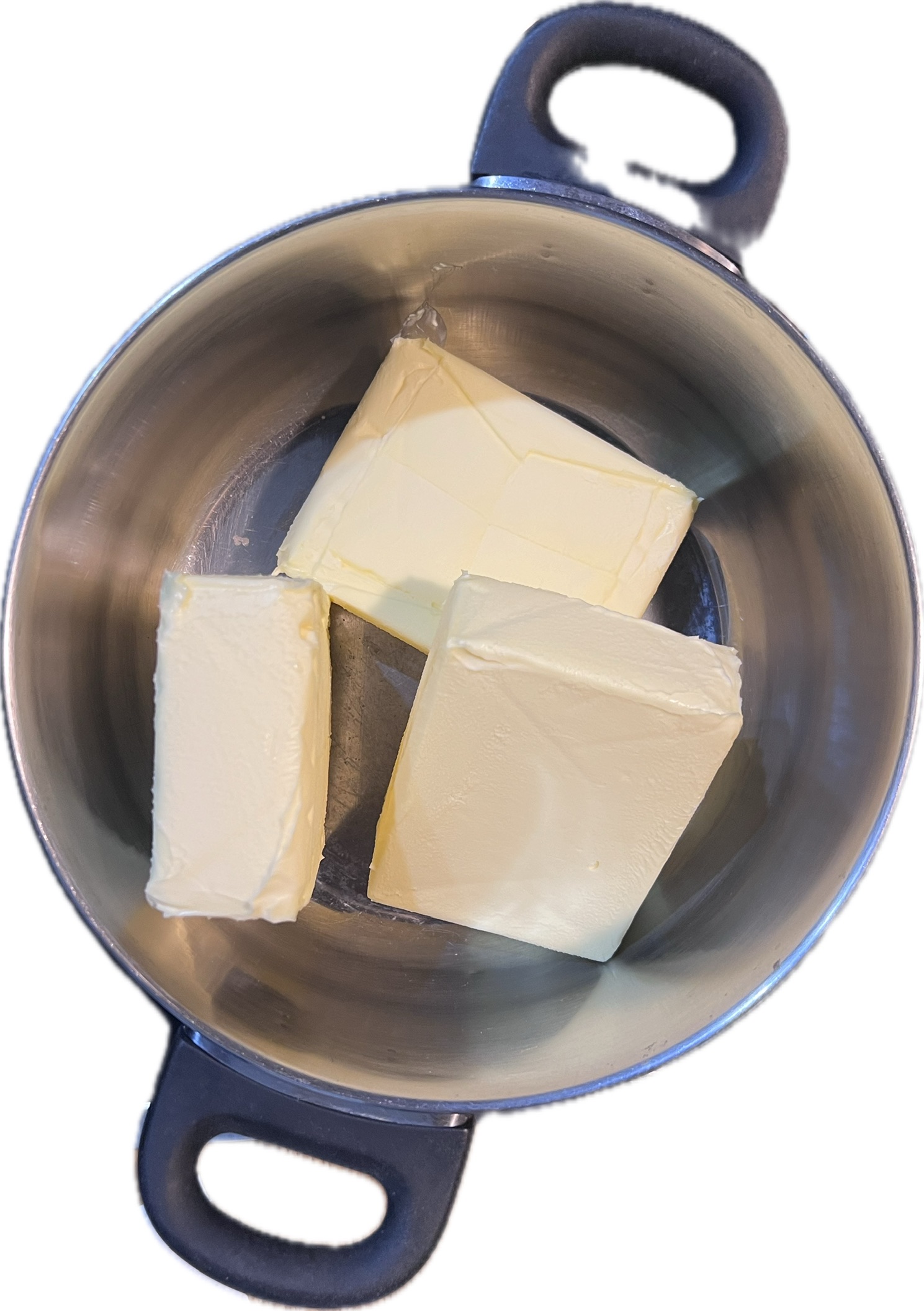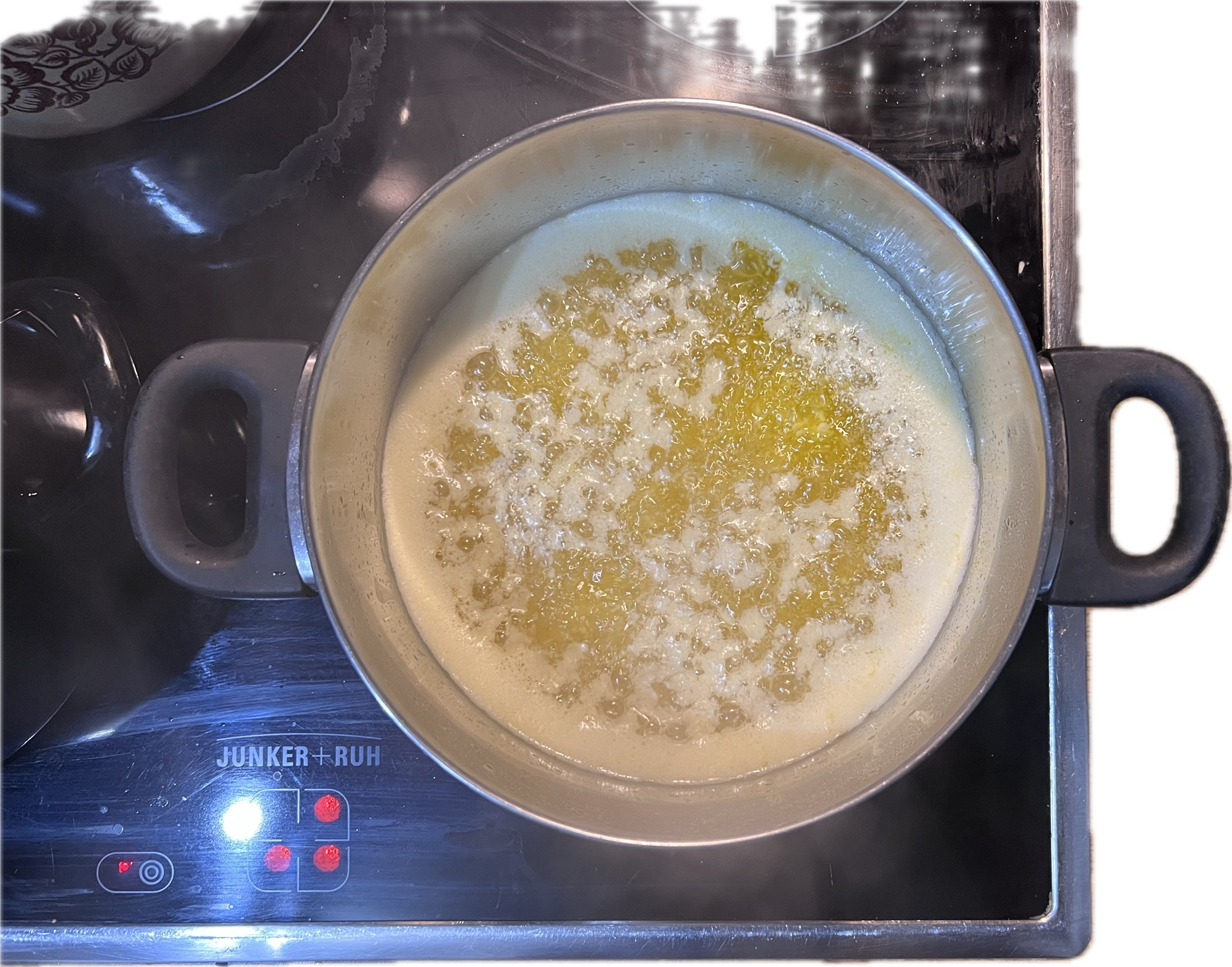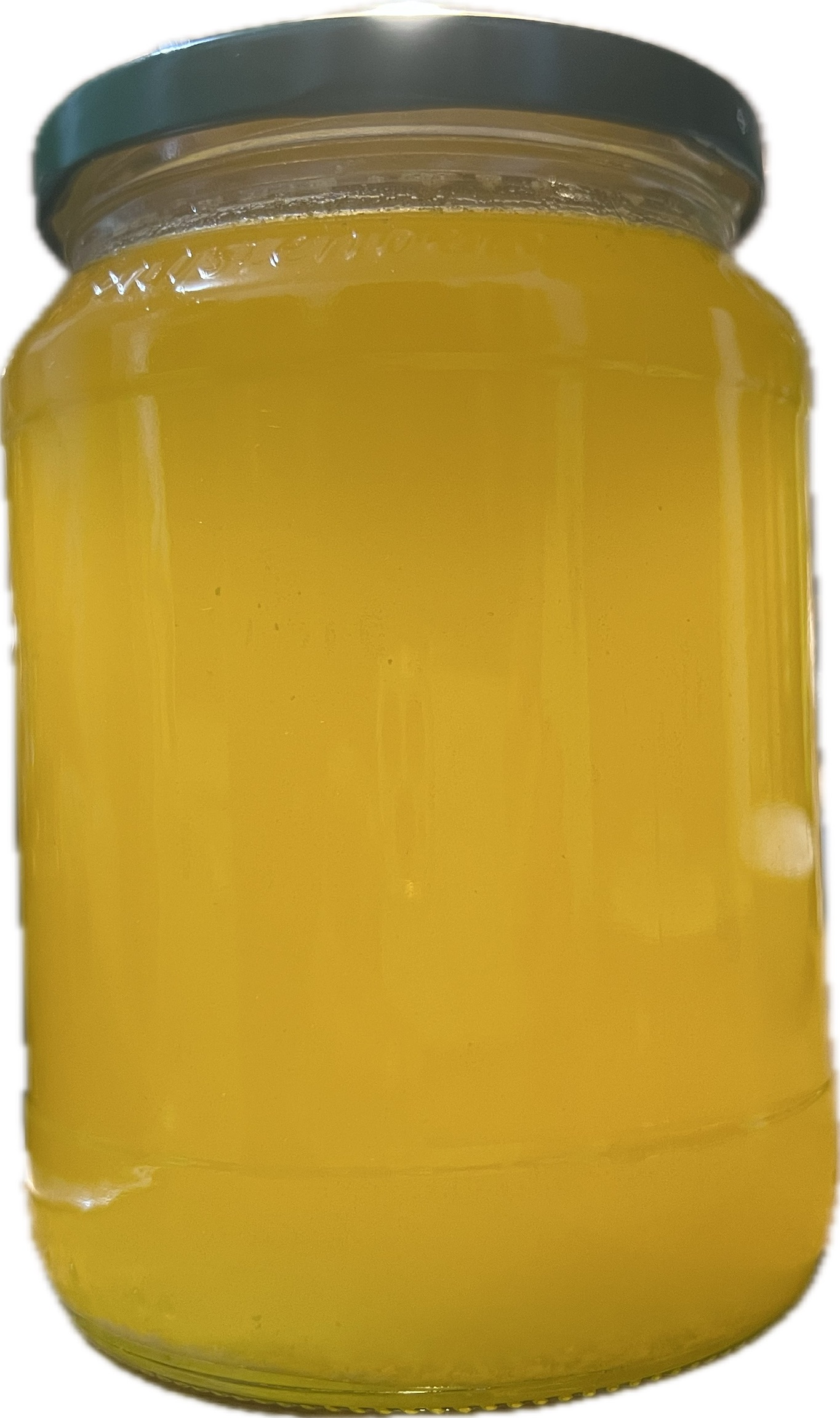The Ghee
Ingredients
- Unsalted butter - 500g
- Salt
- Curry/beetle leaves - 2
Boiling the Butter
- Keep the butter out to bring it to room temperature.
- Transfer to a larger vessel capacity of at least 2 litres.
- Slowly heat up and boil it on low flame for about 10 minutes.

Get the butter blocks to room temperature before heating
- As the butter boils, the size of the bubbles changes from small to large to small again.

Start boiling the butter on low flame
- Turn up the heat for about 5 minutes, and boil on medium.
- Lower the heat and add a pinch of salt.
- Stir and mix. You should notice a creamy solid separating from the clearing fat at this point.

It is all about observing the bubbles and the level of clarification
- Turn up the heat and sprinkle about 5 ml of cold water. Watch up for rigorous boiling.
- Soon, the bubbles settle, and the clarification becomes more apparent.
- If you heat up too much, the solids caramelise in the bottom. This ensures a better fragrance and longevity, but it is easy to burn it. Take precaution.

The most fragrant and grainy ghee comes from best boiling technique and knowing your taste.
- Turn off the heat. Add curry or beetle leaves for flavouring. The ghee-fried leaves are a delicious treat themselves.
- Run the ghee through a sieve and bottle up.

The best ghee granulates as it cools.
- Store the ghee in a cool and dark place to avoid photooxidation.
Cite As: Umadi, Ravi (2023). The Ghee, Retrieved from https://biosonix.io/The-Ghee